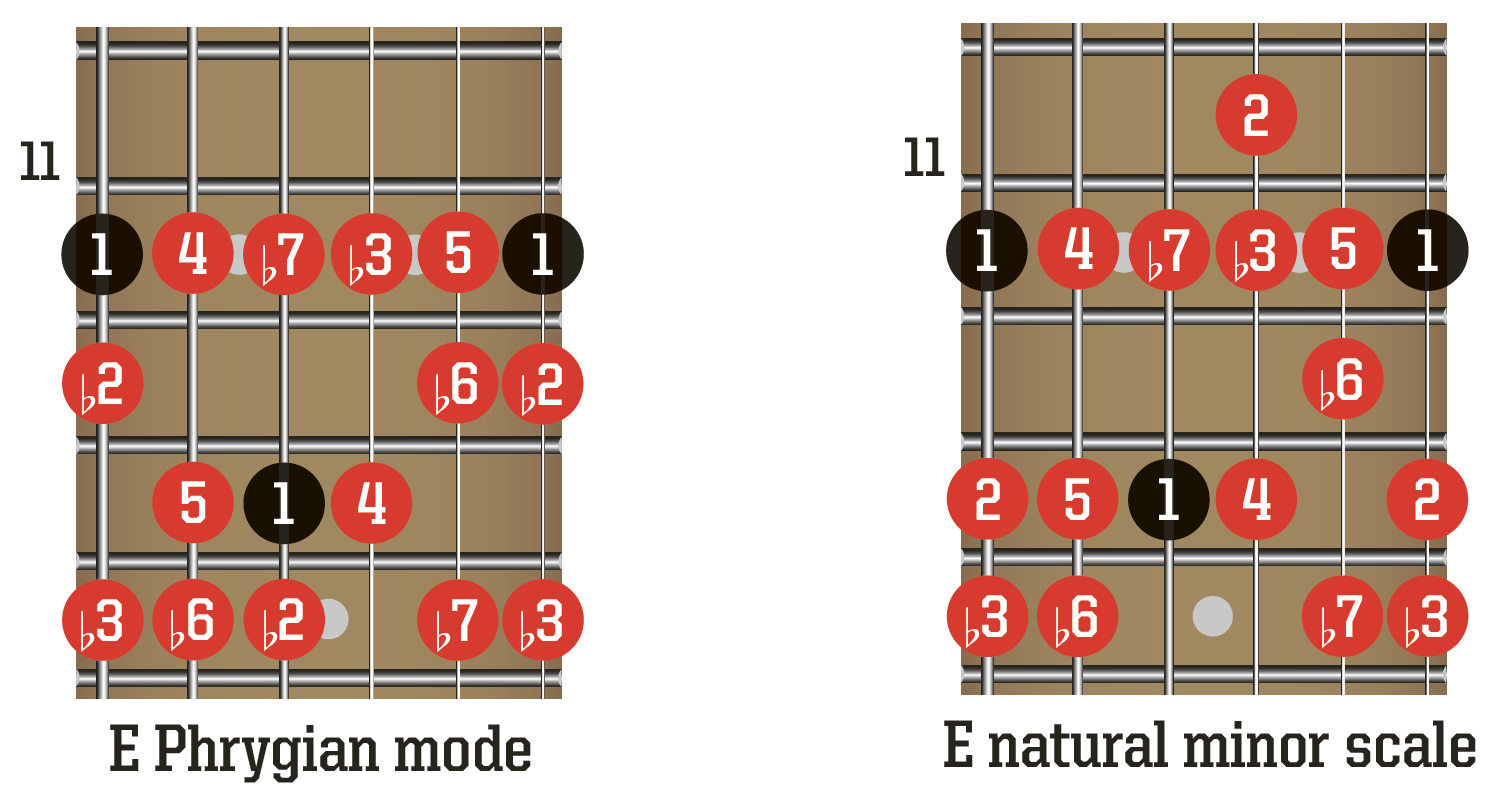Easy guitar theory: Phrygian mode
Master the scale that links thrash and flamenco

Take your next step with modal scales as we look at the clashing, dissonant tones of the Phrygian mode.
Modes are a simple concept - think of them as scales that start on a note that isn’t the root. For example, E Phrygian (E F G A B C D) is a mode of the C major scale (C D E F G A B). They have the same notes but different starting points and each scale has its own musical mood. How so?
It’s because the gaps between the notes (aka intervals) are different in each scale. This starts to make sense once you’re happy that E is your root note, not C. With its moody, dissonant sound, this mode is perfect for thrash metal, flamenco and Latin styles.
C major and E Phrygian scales

Although the two scales have the same notes, the Phrygian mode includes minor intervals, as indicated by the b symbol. So, the b2nd is an F note; it’s one semitone higher than the root. In C major, however, the 2nd (D) is two semitones higher than the root. The same notes, but with different spacing once you treat a different note as your root.
Here we're playing C major and E Phrygian scales. C major sounds bright because the root chord is C major (C E G); E Phrygian suggests a moodier Em root chord (E G B).
The flat 2nd interval - the key to the phrygian sound

The character of the Phrygian mode comes from its b2nd and the clashing sound of two notes played a semitone apart. Compare the Phrygian mode to the most common minor scale of them all, the natural minor scale, and you’ll see this is the only note where the two shapes differ.
This is a typical thrash-metal style riff based on the Phrygian mode. The moody sound is all thanks to the movement between the root note and the b2nd.
Want all the hottest music and gear news, reviews, deals, features and more, direct to your inbox? Sign up here.
Phrygian lead lick
Watch out for the all-important b2nd F notes (found on the 13th fret of the first string and the 6th fret of the second string), giving this lick its Phrygian sound. If you’re not yet convinced how powerful this one note is, simply try playing F# (the 2nd interval from the natural minor scale) instead of the b2nd F. Also try F#5 in place of the F5 chord.
Total Guitar is Europe's best-selling guitar magazine.
Every month we feature interviews with the biggest names and hottest new acts in guitar land, plus Guest Lessons from the stars.
Finally, our Rocked & Rated section is the place to go for reviews, round-ups and help setting up your guitars and gear.
Subscribe: http://bit.ly/totalguitar



